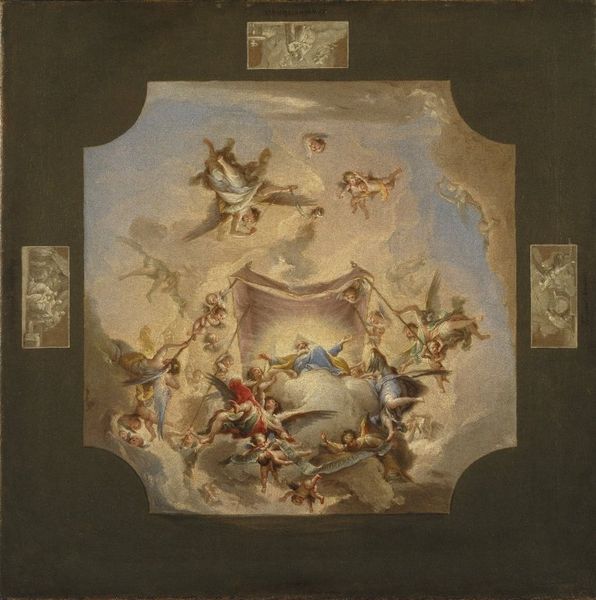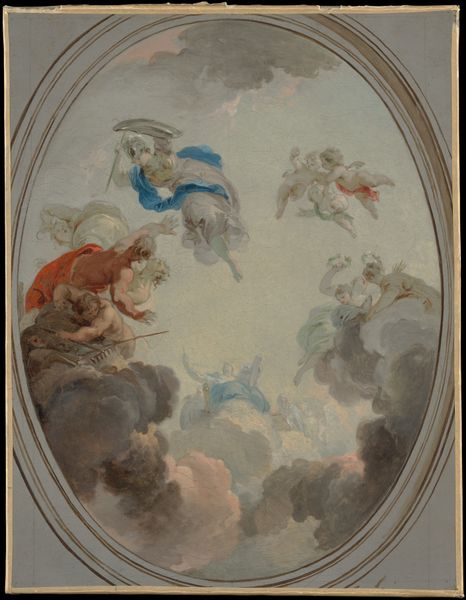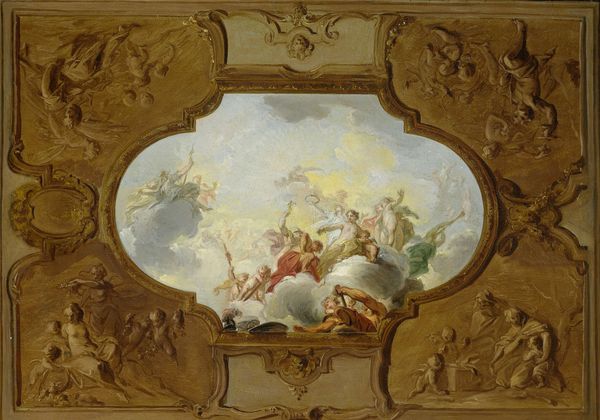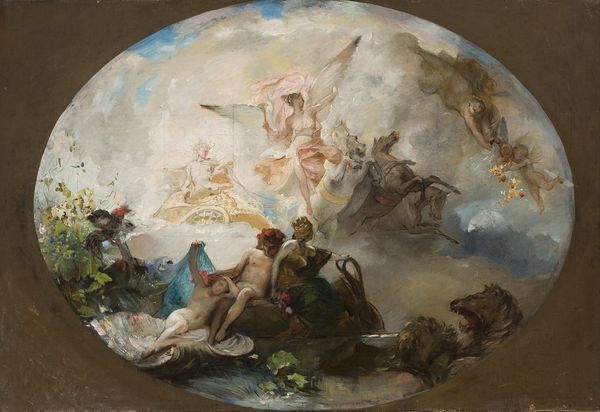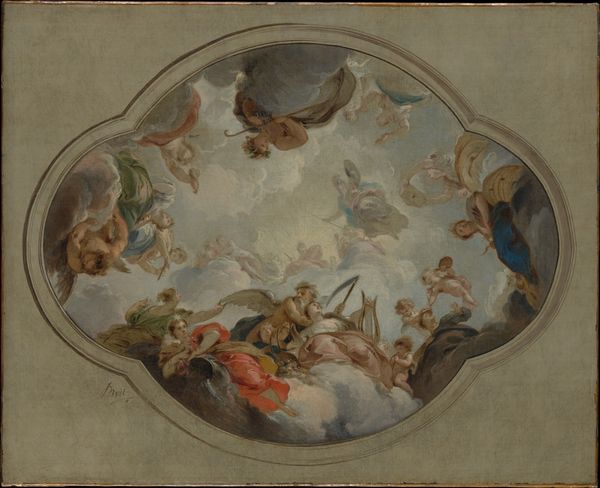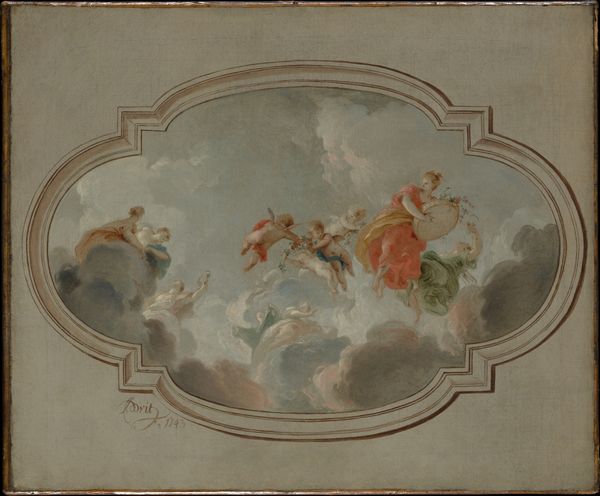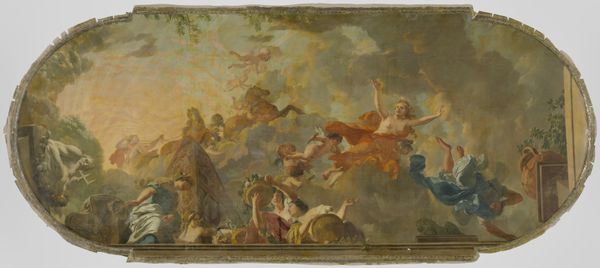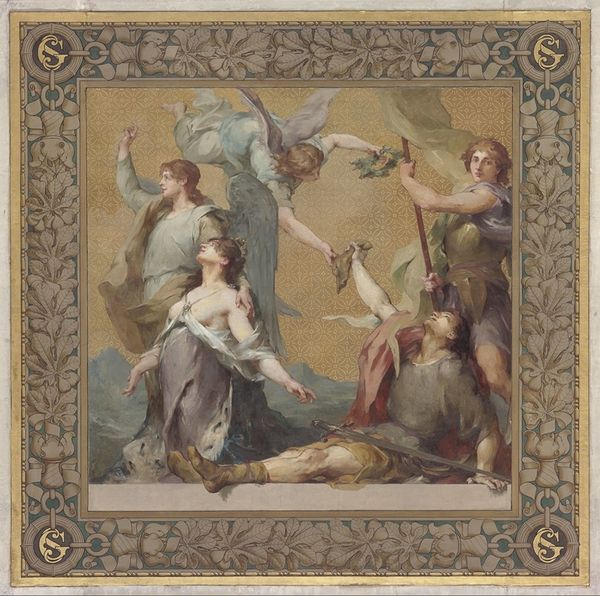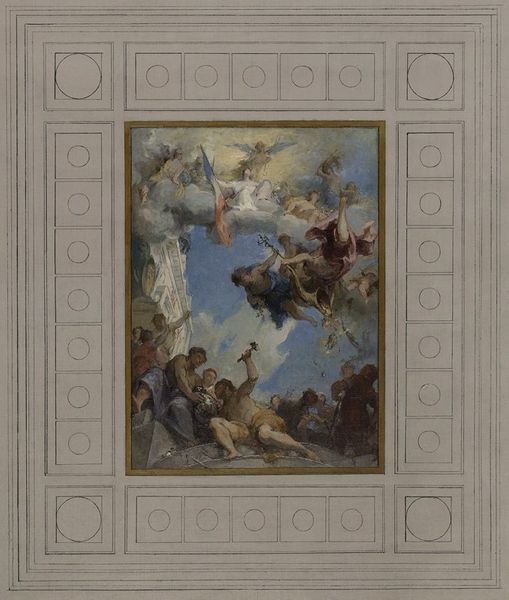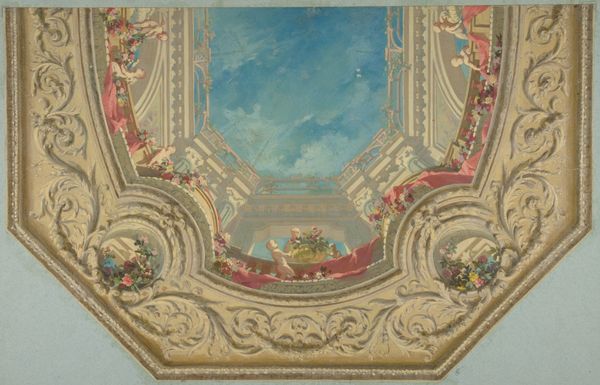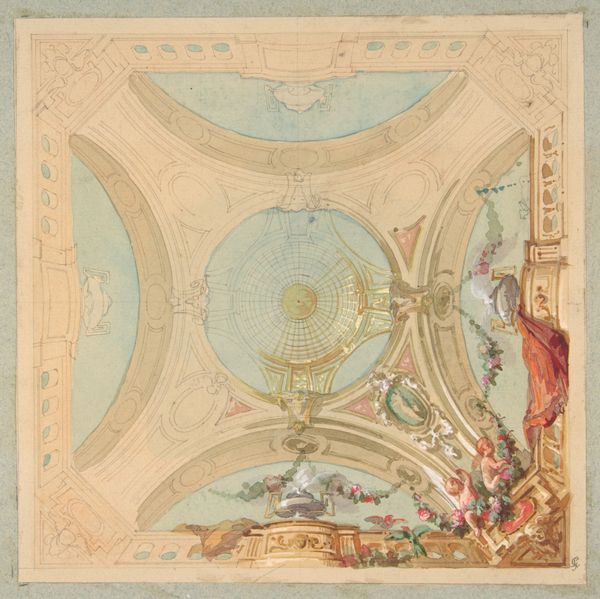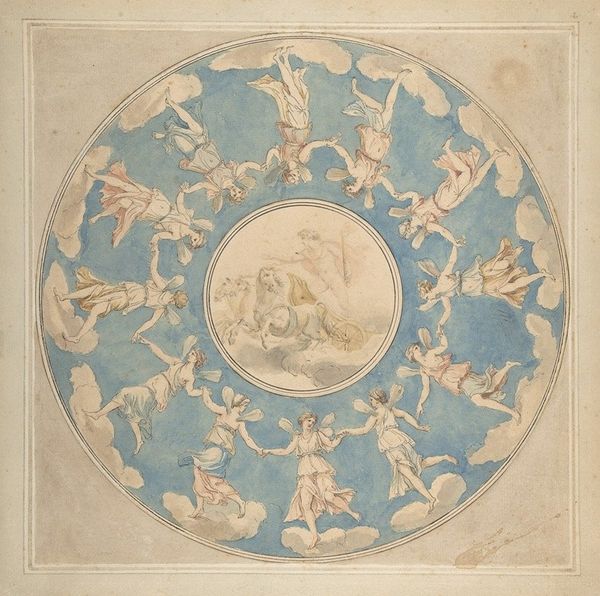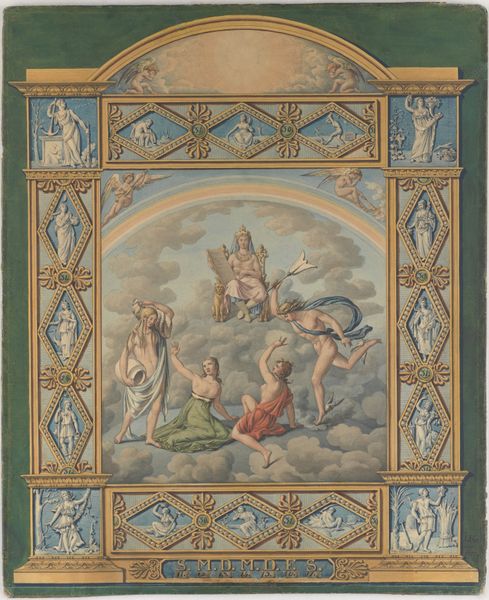
Copyright: Public Domain: Artvee
Editor: So, we're looking at "Allégories du canal de l’Ourcq, du Travail et de la Navigation," painted in 1886 by Henri Leopold Lévy. It seems to be a fresco or oil painting design. There's a definite Baroque sensibility with figures floating amongst the clouds. It has this air of officialdom with the crest at the top. What do you make of it? Curator: Well, let's consider the period. This was created in a time of significant urban development in Paris. The Canal de l'Ourcq was vital for supplying the city. So, it becomes not just a painting, but a statement about civic pride, wouldn't you agree? It uses classical allegory to celebrate modern infrastructure and labor. Think about the role public works played in the late 19th century imaginary. Editor: Definitely! So, by placing allegorical figures within this crest it elevates what was ultimately a feat of civil engineering? Was that a common thread during that time? Curator: Absolutely. The Third Republic sought to legitimize itself through grand public works and artistic commissions. By visually linking itself to classical ideals and notions of progress. Consider who the target audience of such a painting would be. The imagery is intended to resonate with particular sensibilities and foster a shared identity. What does the combination of Labor and Navigation suggest to you? Editor: I see, so the placement of the art in relation to a social function serves as a constant reminder of that era's core values? Highlighting productivity and industry by any means. The scale gives a certain power to that agenda, doesn't it? It really makes you think about what narratives are left out. Curator: Precisely. And considering art's social functions makes us more aware of whose stories were prioritized, and by implication, who were marginalized. Editor: It gives us so much to consider outside just the images portrayed! I’ve never considered that it acts as a kind of socio-historical statement! Curator: Exactly! The image is just the surface. It's about deciphering the forces, and the people, that put it there.
Comments
No comments
Be the first to comment and join the conversation on the ultimate creative platform.
